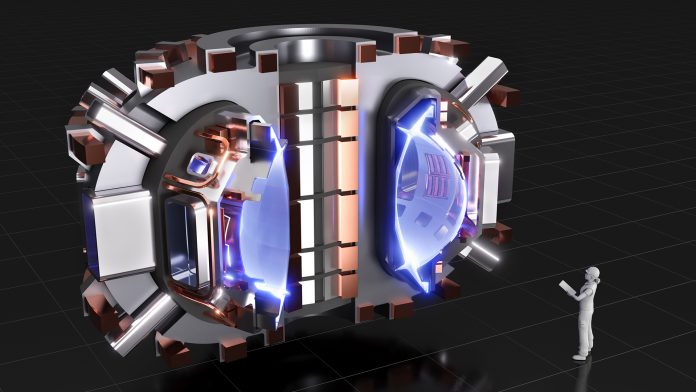MIT and Commonwealth Fusion Systems (CFS) have published a new series of papers outlining the progress of the SPARC project, which aims to create an emission-free power plant.
MIT and CFS’ research agreement aims to develop a next-generation fusion research experiment, called SPARC, a precursor to a practical, emissions-free power plant. After months of intensive research and engineering, the research team have published a series of papers summarising the progress they have made.
Martin Greenwald, deputy director of MIT’s Plasma Science and Fusion Center and one of the project’s lead scientists, said the work is progressing smoothly and on track. The new series of papers demonstrates a high level of confidence in plasma physics and the performance predictions for SPARC.
The seven research papers authored by 47 researchers from 12 institutions were published today in a special issue of the Journal of Plasma Physics. Together, the papers outline the theoretical and empirical physics basis for the new fusion system, which the consortium expects to start building next year.
What is SPARC?
SPARC is planned to be the first experimental device ever to achieve a ‘burning plasma’, which is a self-sustaining fusion reaction in which different isotopes of the element hydrogen fuse together to form helium, without the need for any further input of energy. Studying the behaviour of this burning plasma is seen as crucial information for developing the next step, a working prototype of a practical power plant.
The SPARC design would be far more powerful than existing fusion reactors, achieving fusion performance comparable to that expected in the much larger ITER reactor being built in. The high power in a small size is made possible by advances in superconducting magnets that allow for a much stronger magnetic field to confine the hot plasma.
The development of the superconducting magnets that would allow smaller fusion systems to be built has been proceeding apace. The new set of papers represents the first time that the underlying physics basis for the SPARC machine has been outlined in detail in peer-reviewed publications. The seven papers explore the specific areas of the physics that had to be further refined, and that still require ongoing research to understand the final elements of the machine design and the operating procedures and tests that will be involved as work progresses toward the power plant.
Designing SPARC
The papers also describe the use of calculations and simulation tools for the design of SPARC, which have been tested against many experiments around the world. The authors used simulations, run on supercomputers, that have been developed to aid the design of ITER.
The analysis done so far shows that the planned fusion energy output of the SPARC reactor should be able to meet the design specifications with a comfortable margin to spare. It is designed to achieve a Q factor – a key parameter denoting the efficiency of a fusion plasma – of at least 2, essentially meaning that twice as much fusion energy is produced as the amount of energy pumped in to generate the reaction. That would be the first time a fusion plasma of any kind has produced more energy than it consumed.
The calculations at this development stage of SPARC could achieve a Q ratio of ten or more, according to the new papers. While Greenwald cautions that the team wants to be careful not to overpromise, and much work remains, the results so far indicate that the project will achieve its goals, and specifically will meet its key objective of producing a burning plasma, wherein the self-heating dominates the energy balance.
Greenwald said: “We’re still aiming for a start of construction in roughly June of ’21. The physics effort is well-integrated with the engineering design. What we’re trying to do is put the project on the firmest possible physics basis, so that we’re confident about how it’s going to perform, and then to provide guidance and answer questions for the engineering design as it proceeds.”



